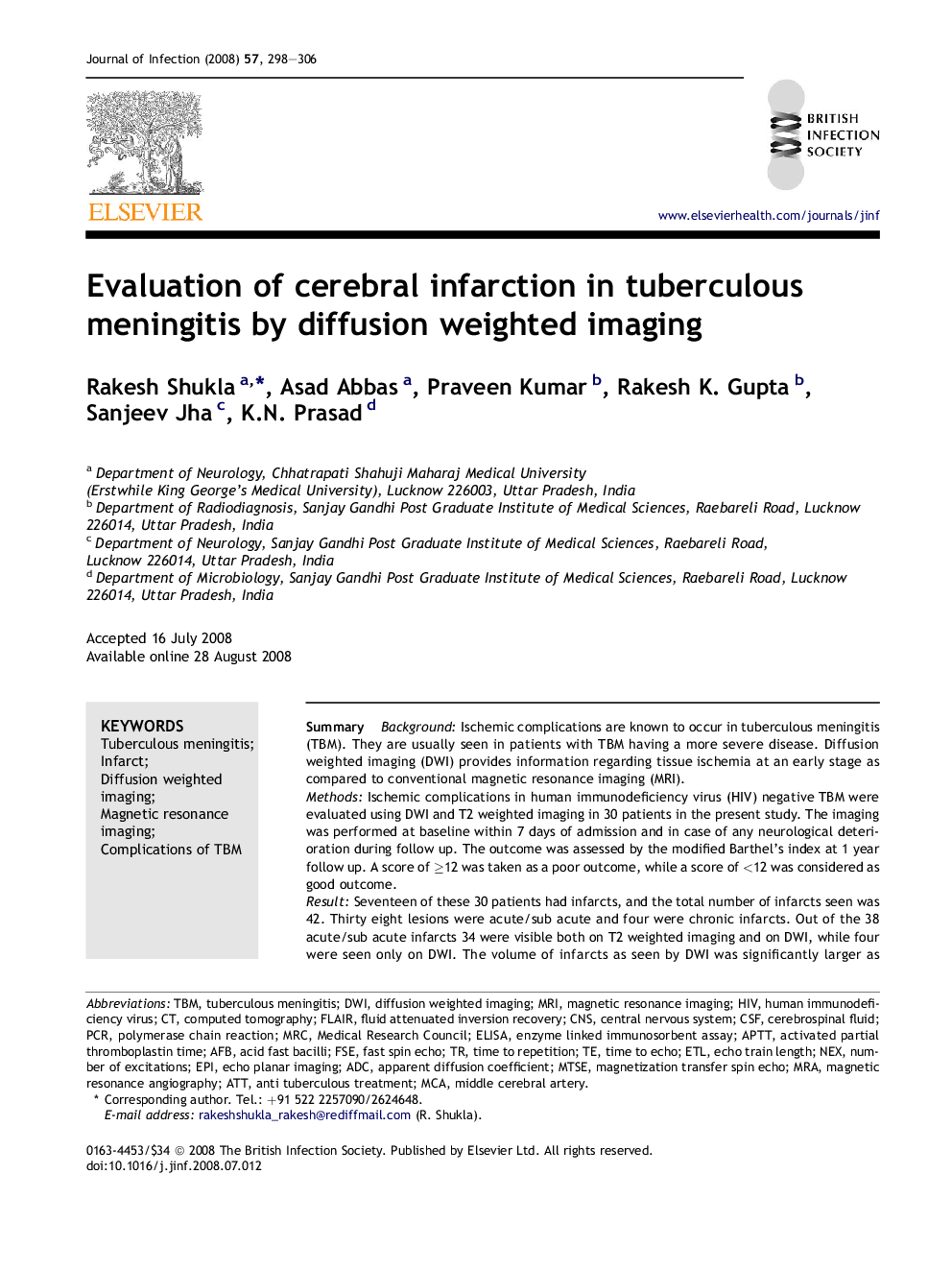| Article ID | Journal | Published Year | Pages | File Type |
|---|---|---|---|---|
| 3376098 | Journal of Infection | 2008 | 9 Pages |
SummaryBackgroundIschemic complications are known to occur in tuberculous meningitis (TBM). They are usually seen in patients with TBM having a more severe disease. Diffusion weighted imaging (DWI) provides information regarding tissue ischemia at an early stage as compared to conventional magnetic resonance imaging (MRI).MethodsIschemic complications in human immunodeficiency virus (HIV) negative TBM were evaluated using DWI and T2 weighted imaging in 30 patients in the present study. The imaging was performed at baseline within 7 days of admission and in case of any neurological deterioration during follow up. The outcome was assessed by the modified Barthel's index at 1 year follow up. A score of ≥12 was taken as a poor outcome, while a score of <12 was considered as good outcome.ResultSeventeen of these 30 patients had infarcts, and the total number of infarcts seen was 42. Thirty eight lesions were acute/sub acute and four were chronic infarcts. Out of the 38 acute/sub acute infarcts 34 were visible both on T2 weighted imaging and on DWI, while four were seen only on DWI. The volume of infarcts as seen by DWI was significantly larger as compared to conventional T2 weighted imaging (p = 0.019). Six patients had a poor outcome, five from the infarct group and one from the non-infarct group.ConclusionDWI demonstrates a larger area of infarction and may also be useful in the early detection of infarction. It should be used as an additional sequence along with conventional imaging in patients with TBM while they are on a follow up on anti tuberculous treatment. The information obtained by DWI may be of value in explaining the clinical condition of the patient as well as in the management and prognostication.
